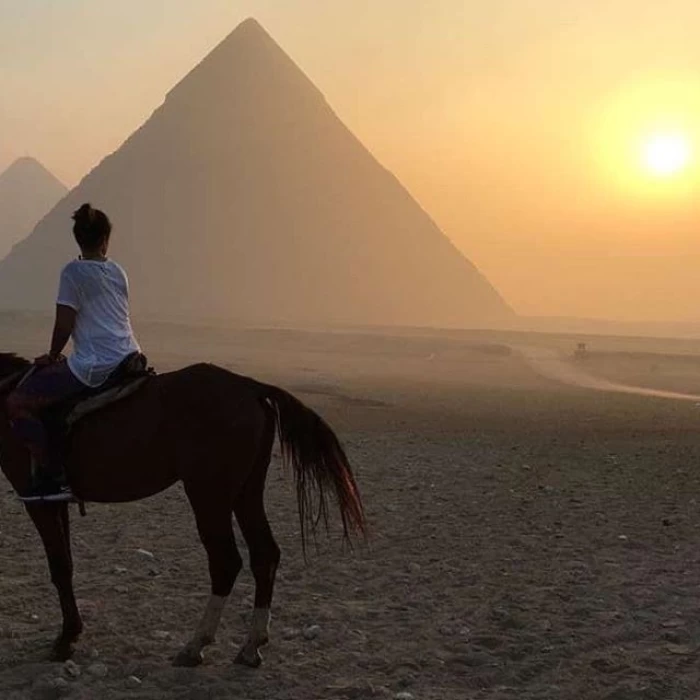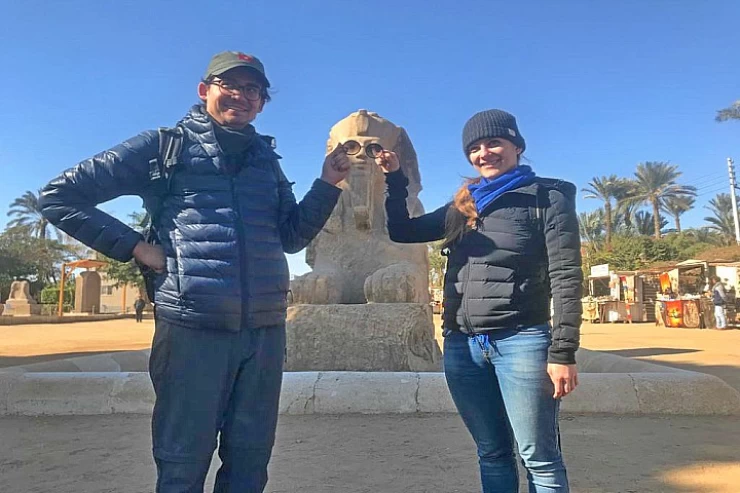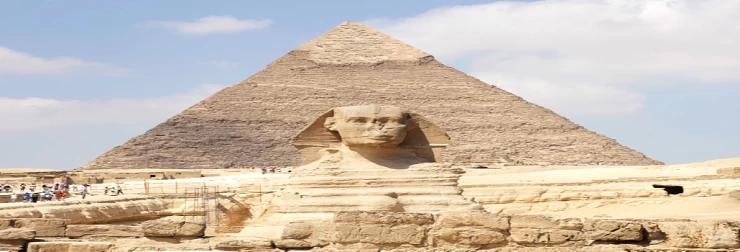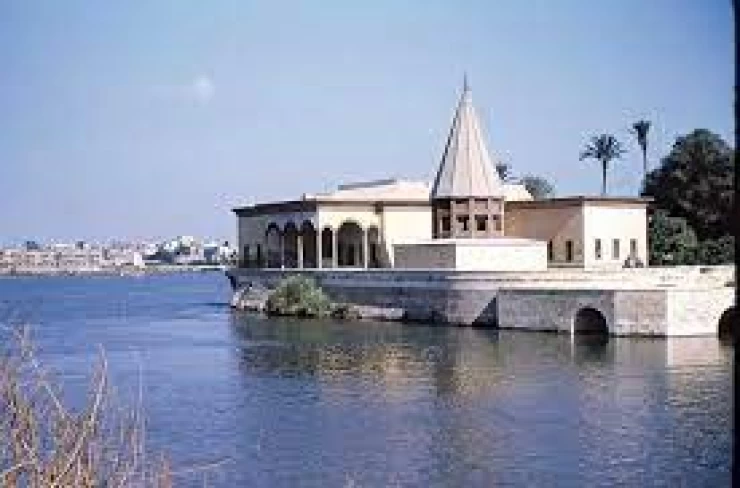
History of Egypt | Egypt Civlization
Egypt's history has been lengthy and prosperous, thanks to the flow of the Nile River and its rich banks and delta, as well as the achievements of Egypt's native inhabitants. Much of Egypt's ancient history remained unknown until the Rosetta Stone was discovered and decoded, which revealed Egyptian hieroglyphs.
The ancient Egyptians' many achievements include the quarrying, surveying, and construction techniques that supported the building of monumental pyramids, temples, and obelisks; a system of mathematics; a practical and effective system of medicine
Ancient Egypt left a lasting legacy. Its art and architecture were widely copied, and its relics were transported to other lands to be studied, admired, or coveted. , visitors and writers have been inspired by its colossal ruins. In the early modern period, Europeans and Egyptians developed a renewed regard for antiquities and excavations, which prompted scientific research into Egyptian civilization and a better awareness of its cultural legacy.
Ancient Egyptian architecture contains some of the world's most famous structures, such as the Great Pyramids of Giza and the Temples of Thebes. The state arranged and supported building projects for religious and commemorative purposes, as well as to underline the pharaoh's vast power. The ancient Egyptians were accomplished builders; employing only simple but effective tools and sighting equipment, architects were able to construct massive stone structures with incredible accuracy and precision, which is still envied today.
Predynastic Egypt
Petroglyphs have been found along Nile terraces and in a desert oasis. A grain-grinding culture supplanted a hunter-gatherer and fishing culture in the tenth millennium BC. Around 6000 BC, climate change and/or overgrazing began to dry off Egypt's pastoral areas, forming the Sahara. Early tribal peoples moved to the Nile River, where they established a stable agricultural economy and a more structured civilization. By about 6000 BC, a Neolithic society had established itself in the Nile Valley. Several predynastic cultures emerged in Upper and Lower Egypt on their own throughout the Neolithic period. The Badari civilization and its descendant, the Naqada series, are widely regarded as antecedents to dynasty Egypt. Merimde, the earliest known Lower Egyptian site, precedes the Badarian by around 700 years. For for than two thousand years, contemporary Lower Egyptian towns coexisted with their southern counterparts, remaining culturally different but in close contact through trade. The oldest known evidence of Egyptian hieroglyphic inscriptions came during the predynastic period on Naqada III pottery jars, dated around 3200 BC.
Dynastic Egypt
The First Intermediate Period marked the beginning of approximately 150 years of political turmoil.[6] However, stronger Nile floods and political stability restored the country's prosperity in the Middle Kingdom around 2040 BC, peaking during the reign of Pharaoh Amenemhat III. A second phase of fragmentation marked the emergence of Egypt's first foreign ruling dynasty, the Semitic-speaking Hyksos. Around 1650 BC, the Hyksos migrants took over much of Lower Egypt and established Avaris as their new capital. They were forced out by an Upper Egyptian army commanded by Ahmose I, who established the Eighteenth Dynasty and moved the capital from Memphis to Thebes.
First Intermediate Period
The First Intermediate Period marked the beginning of approximately 150 years of political turmoil.[6] However, stronger Nile floods and political stability restored the country's prosperity in the Middle Kingdom around 2040 BC, peaking during the reign of Pharaoh Amenemhat III. A second phase of fragmentation marked the emergence of Egypt's first foreign ruling dynasty, the Semitic-speaking Hyksos. Around 1650 BC, the Hyksos migrants took over much of Lower Egypt and established Avaris as their new capital. They were forced out by an Upper Egyptian army commanded by Ahmose I, who established the Eighteenth Dynasty and moved the capital from Memphis to Thebes.
New Kingdom, Third Intermediate Period, and Late Period.
The Eighteenth Dynasty inaugurated the New Kingdom (c. 1550-1070 BC), establishing Egypt as an international power that developed into an empire spanning Syria to Upper Nubia. Hatshepsut, Thutmose III, Akhenaten, and his wife Nefertiti, Tutankhamun, and Ramesses II are among the most well-known Pharaohs from this period. Atenism, the first historically known expression of monotheism, emerged around this period, however, some[who?] regard it as a kind of monolatry rather than monotheism. The New Kingdom gained new ideas as a result of frequent contact with foreign nations. Libyans, Nubians, and Assyrians later dominated and conquered the country, but the native Egyptians eventually drove them out and reclaimed power.
Achaemenid Rule
Egyptian soldier from the Achaemenid army, circa 470 BCE. Xerxes I tomb relief. Except for Petubastis III and maybe Psammetichus IV, the whole Twenty-seventh Dynasty of Egypt, from 525 BC to 402 BC, was ruled entirely by Persians, with Achaemenid kings given the title of pharaoh. Amyrtaeus' victorious uprising ended the first Achaemenid empire and marked Egypt's final important period of independence under native kings. The Thirtieth Dynasty was the final native governing dynasty of the Pharaonic period. It fell to the Persians once more in 343 BC, after the last local Pharaoh, King Nectanebo II, was defeated in combat.
The Second Achaemenid Conquest
The Thirty-first Dynasty of Egypt, commonly known as the Second Egyptian Satrapy, was a short-lived province of the Achaemenid Empire that existed from 343 BC to 332 BC. Following an interval of independence during which three indigenous dynasties reigned (the 28th, 29th, and 30th dynasties), Artaxerxes III (358-338 BC) reconquered the Nile valley for a brief second period (343-332 BC), known as the Thirty-first Dynasty of Egypt, ushering in a new era of Persian pharaohs.
Ptolemaic Kingdom
The Ptolemaic Kingdom was a great Hellenistic monarchy that stretched from southern Syria in the east to Cyrene in the west and south to the Nubian border. Alexandria became the capital city and a hub of Greek culture and commerce. To obtain acceptance among the local Egyptians, they referred to themselves as the Pharaohs' successors.
Roman Egypt
Egypt swiftly became the Empire's breadbasket, supplying the majority of the Empire's grain as well as flax, papyrus, glass, and a wide range of finished commodities. Alexandria became an important trading outpost for the Roman Empire. Shipping from Egypt often reached India, Ethiopia, and other overseas destinations. It was also a major (if not the primary) scientific and technological center for the Empire. Scholars like Ptolemy, Hypatia, and Heron pioneered new fields in astronomy, mathematics, and other subjects. Culturally, the city of Alexandria sometimes rivaled Rome in its importance.
The ancient history that can be perceived from the Pharaohs has to be one of the greatest historical civilizations ever. Its events’ timeline is well over five thousand years, and many aspects of the world, such as art, architecture, culture, and even religion, have their bases in Egypt. The records of the land of Egypt are interesting in that they contain histories of empires that were built and then perished, histories of great kings and queens, and outstanding places and structures that even today, in modern societies, can only marvel at. Egypt’s history is undoubtedly dominated by a vibrant narrative of struggle, hope, and ingenuity of the people portrayed, from the making of the pyramids to the currents of the Nile.
The Ancient Kingdoms of Egypt (c. 3100 BC–332 BC)
1. Pre-Dynastic Period (Before 3100 BC)
The elements of history written of Egypt are dated around 3100 BC, but if one avails of its importance in terms of history, it dates back even to the pre-dynastic era, when there was the emergence of small agricultural settlements along the Nile. By this time, the early residents of Egypt were busy establishing forms of agriculture as well as animal husbandry, pottery making, and the making of crude tools. These settlements served as the foundation of the elaborate systems of culture and society that were to come.
2. The Unification and Early Dynastic Period (c. 3100–2686 BC)
King Narmer, often referred to as Menes was responsible for the unification of Upper and Lower Egypt, which signified the onset of ancient Egyptian civilization. He is considered to be the first pharaoh of Egypt and founded the nation’s first dynasty. This unifying act was essential since it created the nucleus around which the centralized monarchy of Egypt, which was the prevailing system of government for almost three thousand years, would revolve.
Towards the tail end of the Early Dynastic, the very first steps in the construction of monumental architecture began, and hieroglyphs were mastered. It was in this period that the rulers were expected to fulfill the role of the king and also that of a god. This idea existed for many years and was a fundamental one in Egypt.
3. The Old Kingdom (c. 2686–2181 BC)
The divine rulers, who were the Pharaohs in the earthly realm, tamed every resource and manpower to erect huge structures such as the Great Pyramid of Khufu and the Sphinx.
The Old Kingdom period displayed a clear and consistent administrative hierarchy and even a large-scale institutional support system that controlled the resources, agricultural production, and the temples of the state. However, in the latter years of this era, the dominant position of the central authority began to diminish, ushering in an era of chaos and fragmentation.
4. The Middle Kingdom (c. 2055–1650 BC)
Following the tumultuous First Intermediate Period referred to, Egypt returned to political stability and strong rulers in its Middle Kingdom. There is a revival in this period in the fields of art, literature, and monumental building works. Pharaohs such as Mentuhotep 11 and Senusret 111 were responsible for extending Egypt’s boundaries southward into Nubia as well as promoting relations with other countries through trade.
The Middle Kingdom is usually regarded as the classical period of ancient Egypt, filled with relative calm and wealth. The authorities emphasized the development of construction and the growth of the economy of Egypt. In spite of such achievements, the internal conflicts and external challenges finally caused the disintegration of the Middle Kingdom, making way for another period of darkness and despair.
5. The New Kingdom (c. 1550–1070 BC)
The new kingdom constitutes, also from a chronological point of view, the culminating era of ancient Egyptian civilization. It was during this period that Egypt was transformed into a full-fledged empire under rulers such as Thutmose III, Hatusu, and Rameses II, who through wars and conquests, or rather political strategies, expanded Egypt's borders. He also added great temples during this period, such as those at Karnak, Luxor, and Abu Simbel, many of which still exist today.
Il nuovo regno era un’epoca che riformò anche la religione in notevoli modi, come il periodo di regno del faraone Akhenaten, which introduced a period of continuous fight in worshipping a single god—Aten, the disk of the sun. His was, however, an unpopular and a very brief rule, for there were leaders after him who brought back the old ways of worship in Egypt, which was worshiping none but many gods.
But then, power aside, Egypt was not immune to the laws of history. By the close of the New Kingdom, this state institution in question was already wobbly, and there was a gradual abatement of its activities.
1. The Ptolemaic Dynasty (332–30 BC)
For many centuries, the old state of Egypt thrived free until that point in time, which altered when the rule of Alexander the Great started in the year 332 BC. It was also during those years that Alexandria became the center of Greek civilization and education, with the noted Library of Alexandria and the Lighthouse, which is now one of the Seven Wonders of the Ancient World.
Until the end of the dynasty, the traditions of Egypt were largely maintained, even though the rulers were Hellenistic kings. The last ruler of this dynasty, Cleopatra VII, was known to have opposed the domination of Rome by trying to establish relations with Julius Caesar and Mark Antony. However, after her loss at the Battle of Actium in 31 BC, Egypt fell into the Roman Empire.
Under the control of the Romans, Egypt was considered one of the most valuable provinces of the empire, primarily because it was rich and produced plenty of crops, particularly grains. The Romans maintained several of the practices of the Ptolemaic kings; however, Egypt was administered as a colony of the empire. The establishment of Christianity in Egypt started during the Roman times, and it was in the 4th century A.D. that Egypt began to develop into a significant early center of Christianity.
The phase change from the Roman to the Byzantine Empire that occurred in 395 AD marked the slow deterioration of Egypt’s economic well-being, but Egypt was still geographically and religiously active. It was also in this time period that the popular Coptic Church was born, which incorporated aspects of Christianity with ancient Egyptian beliefs.
The Egyptian territories fell to the Army of Islam in the year 642 AD. This marked the commencement of the Islamic Era in Egypt. As Cairo, a city created by the Fatimids in 969 AD, grew prominent, it was clear that Egypt was going to become one of the most pivotal countries in the Islamic world. After most of the Egyptian lands were conquered, Egypt witnessed great prosperity in learning, trade, and the arts.
The Fatimids, Ayyubids, and Mamluks
The capital of Egypt was established, and the famous Al-Azhar University was built during the reign of the Fatimid Dynasty which ruled over Egypt. With the waning of the Fatimid era, Egypt was captured for a brief period by the fact that Saladin, protector of the territories, including Egypt himself, later founded the Ayyubid dynasty, whose main task was fighting against the Crusaders.
Later came the Mamluks, who were a military caste and who ruled over Egypt for several eras. They built a number of the most beautiful structures in the city, including mosques, schools, and fortifications, in the Mamluk period. Egypt was, at least at the stage when it was defeated, a rather big country with advanced development before it was conquered by the Ottoman Empire.
Egypt in the Modern Era (1517–Present)
1. Ottoman and British Rule
With the Ottoman Empire's conquest in 1517, Egypt was annexed as part of the empire for nearly four hundred years and had remained so bound. That is primarily due to its geopolitical possibilities; it was invaded several times by European powers, and in 1798 Napoleon Bonaparte managed to invade Egypt for a short period. After the French lost in this region, Egypt was ruled by Muhammad Ali Pasha, who was on modern Egypt’s compass. He reformed agriculture, industry, and the military; these transformations served as the waking up of the modern state of Egypt.
In the late nineteenth century, Egypt acquired the status of a British protectorate, which lasted until ’52, the year Egypt resumed control after a revolution led by Gamal Abdel Nasser. It was Nasser who became one of the most powerful figures within the Arab sphere of influence, propagating pan-Arabism and earlier nationalizing the Suez Canal in 1956.


















